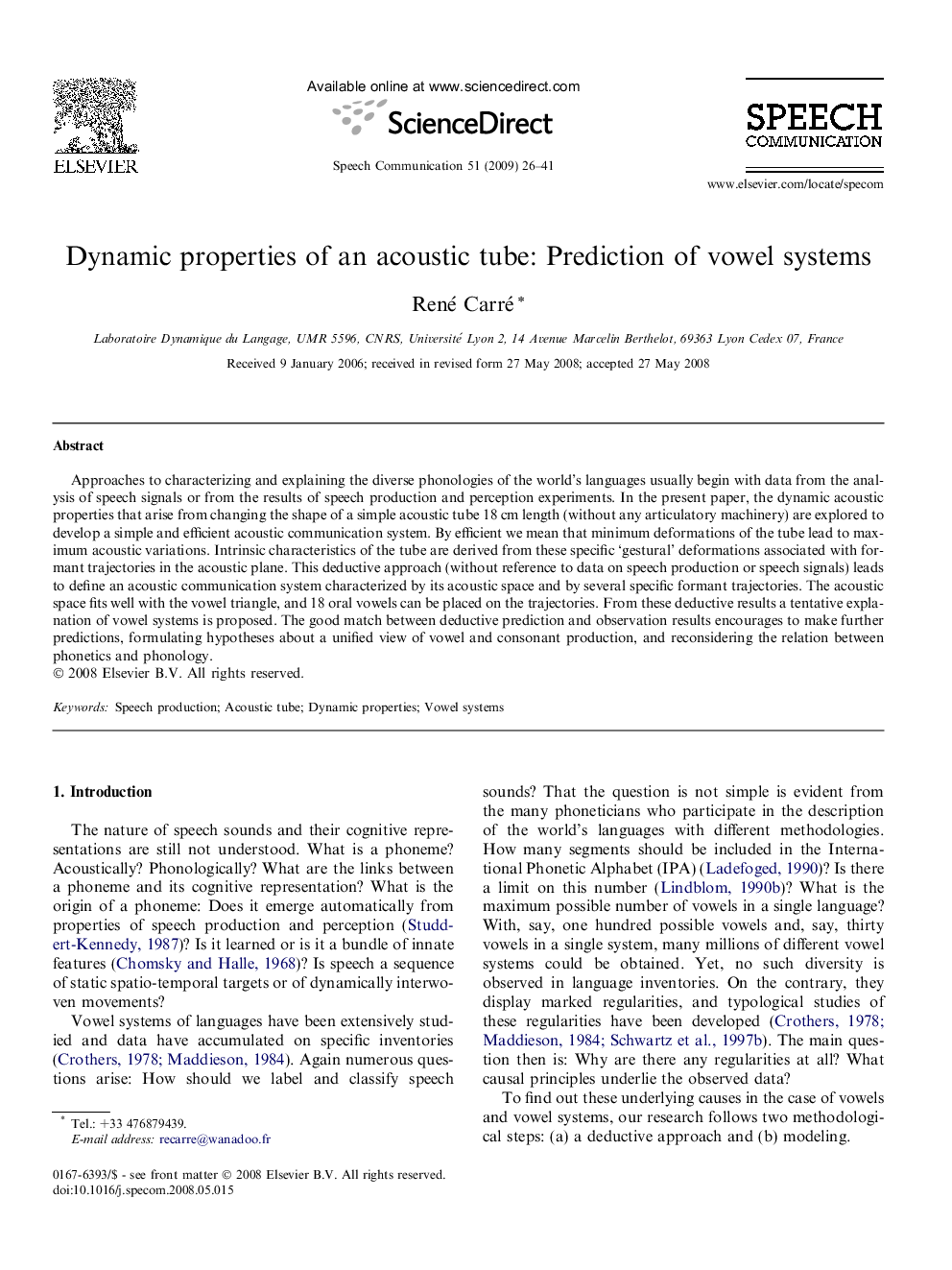| Article ID | Journal | Published Year | Pages | File Type |
|---|---|---|---|---|
| 565410 | Speech Communication | 2009 | 16 Pages |
Approaches to characterizing and explaining the diverse phonologies of the world’s languages usually begin with data from the analysis of speech signals or from the results of speech production and perception experiments. In the present paper, the dynamic acoustic properties that arise from changing the shape of a simple acoustic tube 18 cm length (without any articulatory machinery) are explored to develop a simple and efficient acoustic communication system. By efficient we mean that minimum deformations of the tube lead to maximum acoustic variations. Intrinsic characteristics of the tube are derived from these specific ‘gestural’ deformations associated with formant trajectories in the acoustic plane. This deductive approach (without reference to data on speech production or speech signals) leads to define an acoustic communication system characterized by its acoustic space and by several specific formant trajectories. The acoustic space fits well with the vowel triangle, and 18 oral vowels can be placed on the trajectories. From these deductive results a tentative explanation of vowel systems is proposed. The good match between deductive prediction and observation results encourages to make further predictions, formulating hypotheses about a unified view of vowel and consonant production, and reconsidering the relation between phonetics and phonology.
